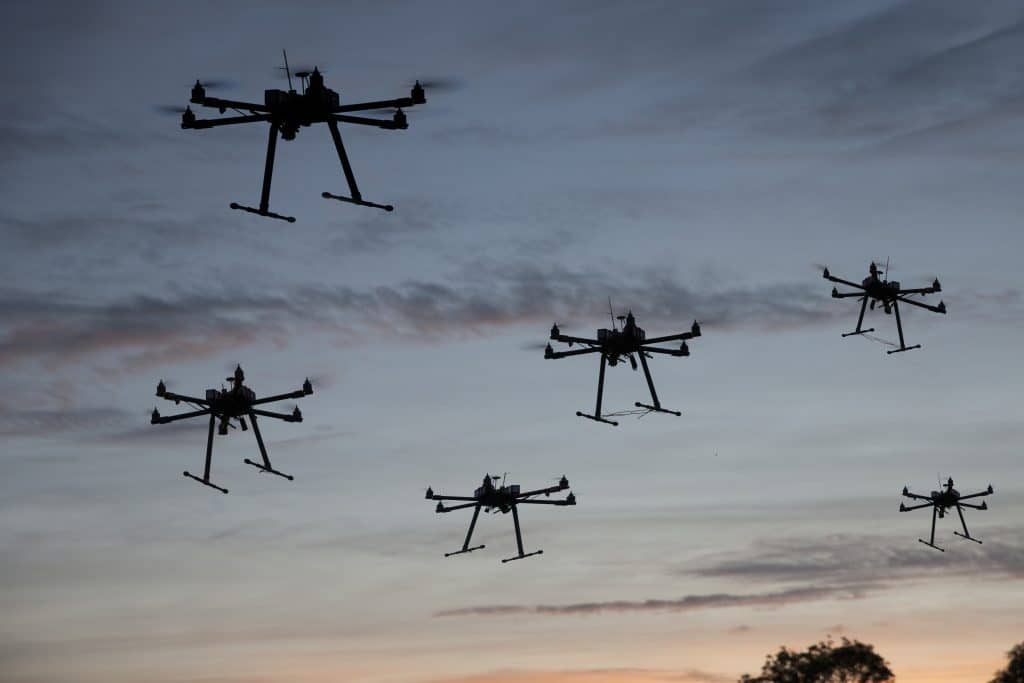AUVSI Statement for the Record – America Builds: Air Traffic Control System Infrastructure and Staffing
March 4, 2025

Testimony of Association for Uncrewed Vehicle Systems International (AUVSI)
Submitted for the Record to U.S. House of Representatives Committee on Transportation and Infrastructure Aviation Subcommittee
America Builds: Air Traffic Control System Infrastructure and Staffing
March 4, 2025
Chairman Nehls, Ranking Member Cohen, and Members of the Subcommittee:
On behalf of the Association for Uncrewed Vehicle Systems International (AUVSI), we appreciate the opportunity to submit this testimony regarding the critical need for modernizing the U.S. Air Traffic Control (ATC) system to support the safe and efficient integration of Advanced Air Mobility (AAM) and uncrewed aircraft systems (UAS or drones) into the National Airspace System (NAS). This hearing is particularly timely, and we applaud you for conducting this important oversight.
AUVSI is the world’s largest industry association representing the uncrewed systems, robotics, and autonomy industry. Our members create systems that operate in the air, on the ground, and in the water across the civil, commercial, and defense domains. Today, we are submitting testimony to the Aviation Subcommittee representing our members in the UAS and AAM industries, the latter of which includes electric vertical takeoff and landing (eVTOL) and powered-lift/air taxi aircraft designed to carry people and cargo. The Federal Aviation Administration (FAA) is poised to soon certify an eVTOL aircraft, marking the first time the U.S. has certified an aircraft in a new category in five decades.
Aviation safety requires constant vigilance, innovation, and a commitment to progress. That is why we believe that the conversation about the future of aviation and autonomous operations is critical. As we look ahead, we must ask ourselves two key questions:
How do we modernize our airspace to meet the challenges of today and tomorrow?
How can autonomy and emerging technologies enhance safety, efficiency, and resilience across the aviation ecosystem?
The solutions are within reach – but only if we act with urgency and purpose.
We are at a pivotal moment in aviation history, with drones, AAM, and autonomy offering the potential to unlock significant benefits in both safety and technological leadership. With those benefits will also come tremendous economic activity and workforce opportunities. As such, supporting the advanced aviation and autonomy industry should be a national priority.
Drones offer a cost-effective solution for critical operations including public safety, package delivery, precision agriculture, utilities maintenance, infrastructure inspections, and much more. AAM is revolutionizing propulsion systems, battery technology, and flight controls, unlocking new areas in both metropolitan and rural areas not served by traditional aviation and enhancing workforce productivity and safety. Companies are opening high-rate production facilities and creating thousands of high-quality manufacturing jobs at an increasing rate.
The current U.S. ATC system allows for the initial entry of eVTOL aircraft into service, but for these operations to scale, modernization is essential. Legacy infrastructure, outdated surveillance and communication technology, and workforce shortages all present barriers to ensuring next-generation aviation technologies can safely and efficiently operate in the NAS. It is important to note that low-altitude commercial drone operations – whether conducted under Part 107 or a waiver for Beyond Visual Line of Sight (BVLOS) operations – do not utilize ATC services. However, their full integration into the NAS will be realized sooner with investments in airspace awareness technologies, digital traffic management systems, and regulatory updates to accommodate growing commercial and civil use cases.
To ensure the U.S. remains a global leader in aviation, Congress should:
Increase federal investment in ATC modernization to enhance airspace management, automation, and digitalization.
Support accelerated FAA implementation of UAS Traffic Management (UTM) frameworks to manage UAS and AAM operations efficiently.
Expand ATC workforce training and hiring initiatives, leveraging technology-assisted management tools to balance controller workload.
Ensure flexible, risk-based regulations that allow AAM and UAS technologies to safely scale without unnecessary regulatory delays.
UTM software is demonstrating extraordinary potential to revolutionize ATC by enabling the safe integration of drones and other uncrewed systems into shared airspace. Recent industry operations in the Dallas area utilizing the FAA’s Near-Term Approval Process (NTAP) have showcased how UTM systems can effectively coordinate complex operations, manage airspace conflicts, and ensure safety in real-time, even in dense urban environments. This industry coordination in deploying operations has proven the software’s ability to handle the dynamic demands of low-altitude airspace, setting the stage for broader adoption.
By leveraging advanced algorithms, real-time data sharing, and automation, UTM technology is not only enhancing efficiency and safety but also paving the way for future innovations in AAM, and, eventually, the broader NAS. The initial success of these tests is a clear signal that UTM systems are ready to play a critical role in the next generation of air traffic management.
Accordingly, AUVSI urges Congress and the FAA to prioritize the following investments and policy actions to enable NAS modernization:
Accelerating the development and implementation of a UTM framework to support increasing UAS operations and pave the way for scaling AAM operations.
This system should complement traditional ATC without adding additional work for air traffic controllers.
Automation and digital tools should be leveraged to reduce controller workload while maintaining safety and efficiency.
Investing in cloud-based data systems, artificial intelligence (AI)-driven airspace management, and real-time data-sharing capabilities to enhance coordination between crewed and uncrewed aircraft.
Modernizing voice-based air traffic communications with digital interfaces to accommodate increasing airspace users.
Expanding and strengthening the ATC workforce to include a greater number of helicopter route controllers with specialized training to manage powered-lift operations.
Ensuring controllers are equipped to support diverse and dynamic powered-lift operations across both urban and rural environments.
Providing funding for targeted recruitment and training programs to build a workforce capable of supporting the next generation of advanced aviation.
Enhancing and expanding powered-lift and helicopter routes to maintain the U.S.’s position as the most inclusive and accessible airspace in the world.
Infrastructure investments should focus on creating reliable, scalable, and modernized airspace corridors that facilitate the safe integration of powered-lift aircraft.
Airspace management policies must focus on expanding access, not restricting it, to support innovation and ensure new entrants can safely operate alongside traditional aviation.
By taking these steps, Congress and the FAA can ensure the continued safety, efficiency, and global leadership of the U.S. aviation system while enabling the full potential of powered-lift and advanced aviation technologies.
Additionally, ensuring safe, secure, and sufficient spectrum allocation is a top priority. Reliable and secure spectrum access is vital for communications, navigation, and control of AAM and UAS. Congress must ensure the FAA, National Telecommunications and Information Administration (NTIA), and Federal Communications Commission (FCC) coordinate to allocate sufficient protected spectrum for advanced aviation operations.
Our airspace system, while built on a strong foundation, depends on technologies that have long outlived their intended lifespan. We are continually putting duct tape – billion-dollar duct tape – on the current system, most of which is well past its intended lifespan. Our air traffic controllers and aviation professionals work tirelessly to keep our skies safe, but they need the right tools to do so effectively. Safety in aviation is never a given – it demands continuous investment, modernization, and commitment.
A modernized ATC system is essential to unlocking the full potential of AAM and UAS while maintaining the safety, efficiency, and economic vitality of the NAS. AUVSI stands ready to collaborate with Congress, the FAA, and industry stakeholders to advance policies that support ATC modernization and ensure the U.S. aviation sector remains at the forefront of global innovation.
Thank you for your consideration. We look forward to working with the Subcommittee to ensure a future-ready NAS that safely unlocks the full benefits of modern technology and equally benefits all aviation stakeholders.


